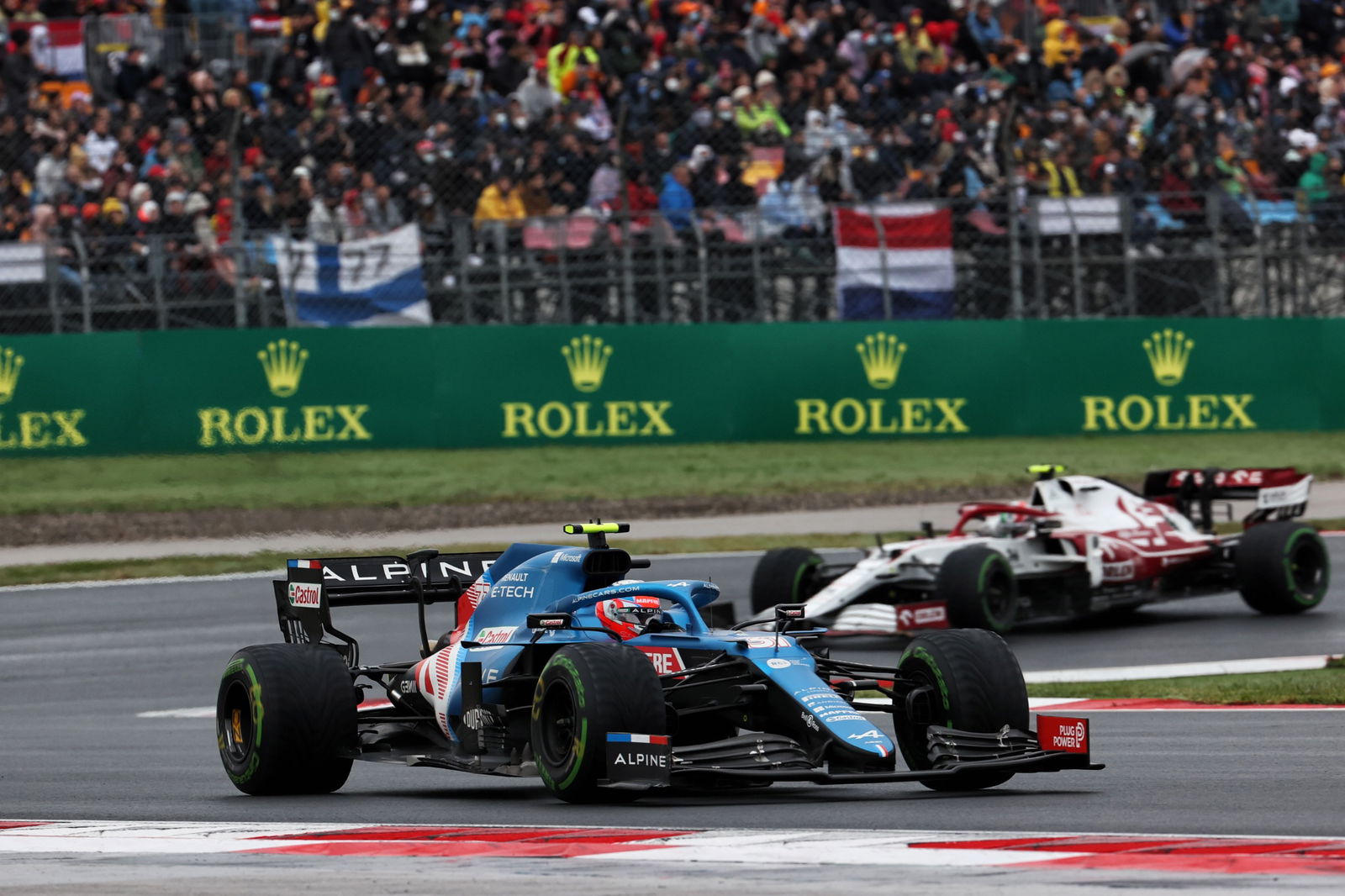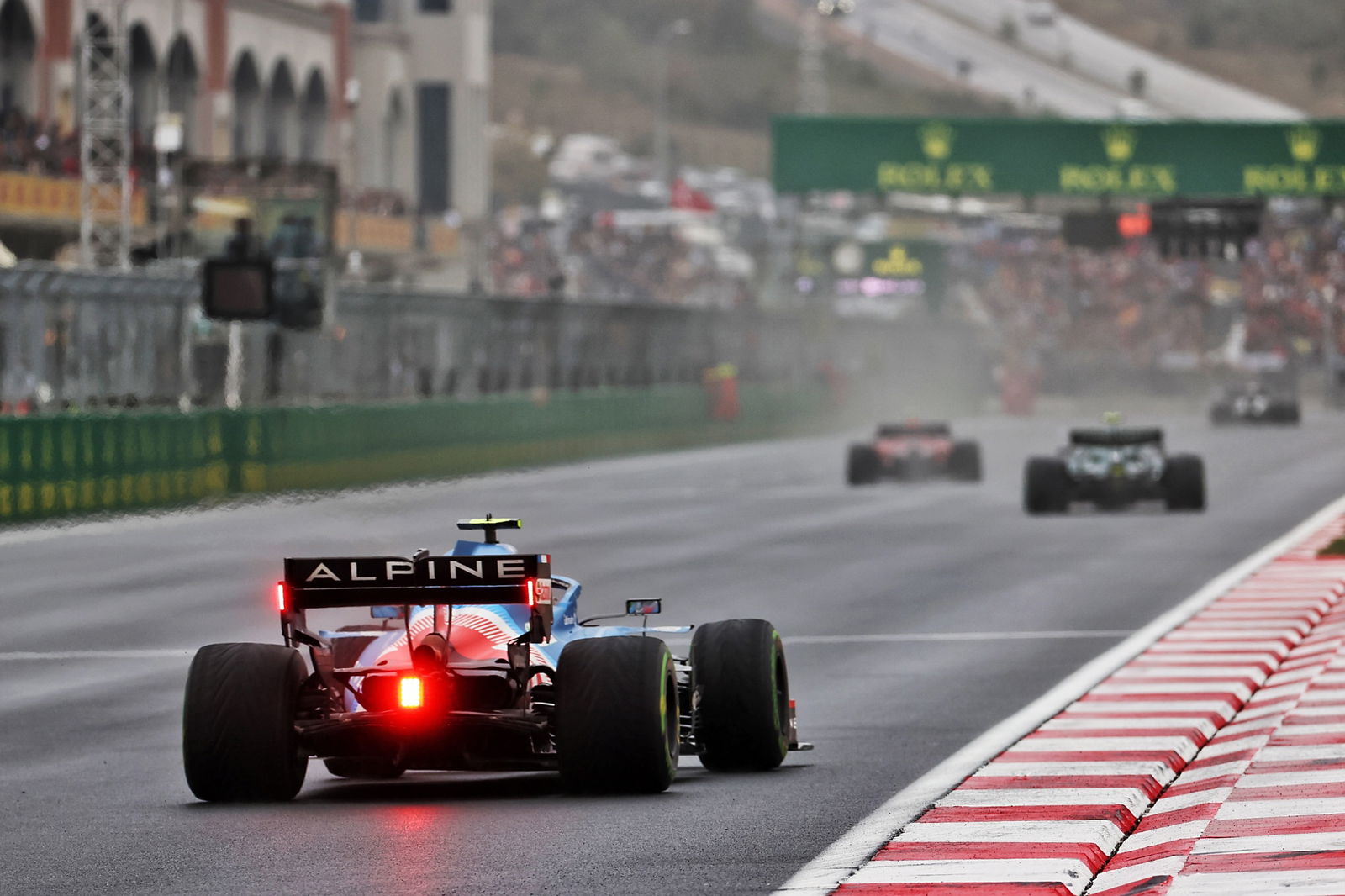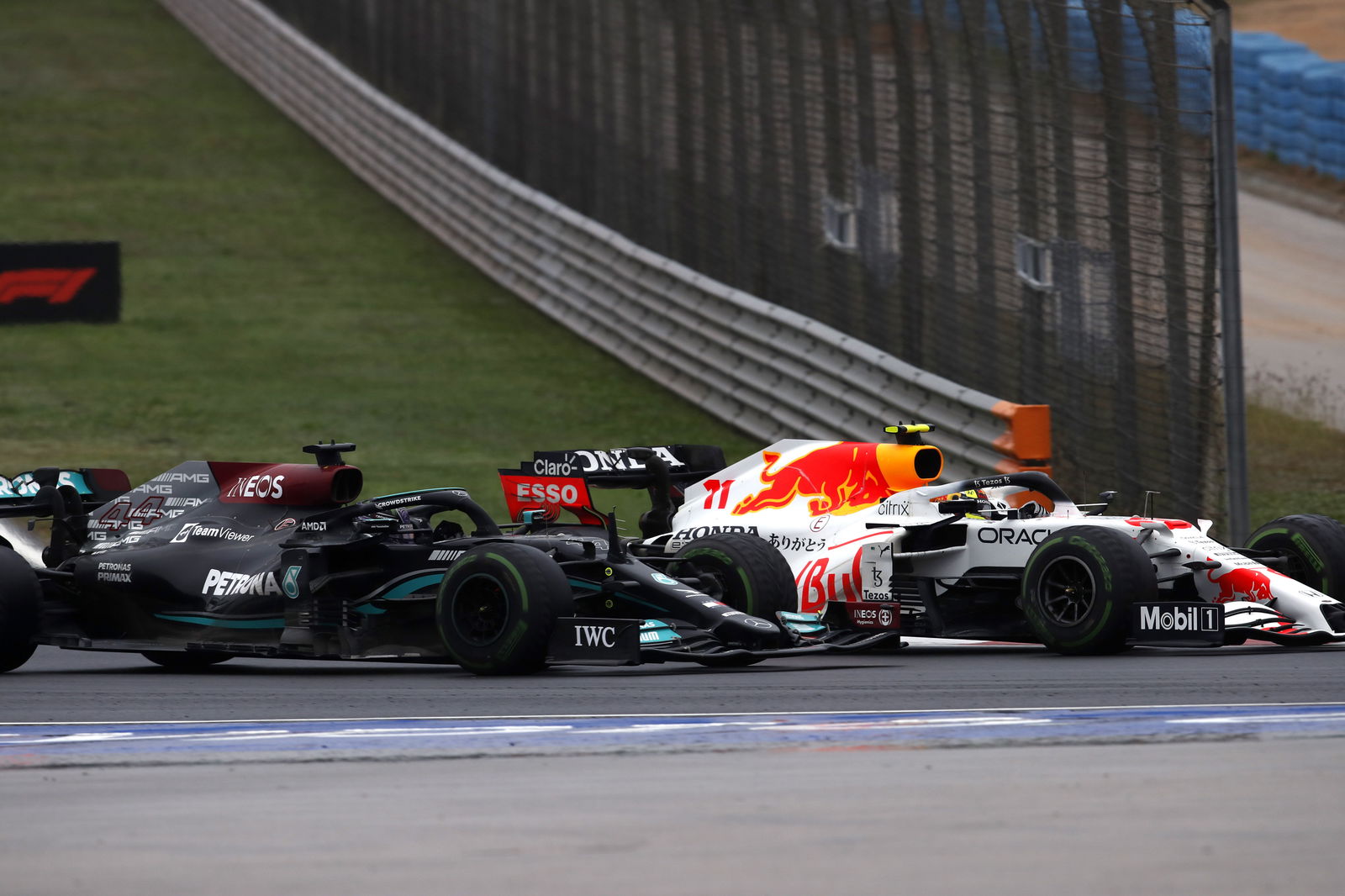How Esteban Ocon pulled off seemingly impossible no-stop F1 strategy

Such a strategy is not usually allowed in the dry, with drivers forced to make a mandatory pit stop to change their tyres. But when conditions are classified wet, anything goes.
One-time race-leader Charles Leclerc and Lewis Hamilton both initially attempted to go to the end without stopping, before Ferrari and Mercedes eventually had to cut their losses by calling their drivers in for a new set of intermediate tyres.
Ocon was the only driver in the field who made it work and raced the entire 57 laps (Ocon finished a lap down) on one set of inters. It was a gamble that paid off as the Frenchman collected the final point on offer by finishing 10th in his Alpine.
“We made the joke that the guys were tired so let’s not give them a stop that time,” laughed Ocon. “When we were fighting with Seb [Vettel] we were just debating a bit, should we stop or keep going.
“At the time I had a really good pace, the tyres were in good shape, and I thought ‘just keep going’. We tried risk and reward and in the end it paid off, we got the small reward which is a point.”
It was no easy feat for Ocon, who admitted he found the challenge “very difficult”. Ocon had to take drastic measures such as avoiding the kerbs in the closing stages in order to nurse his badly worn tyres to the finish.
His pace dropped off dramatically as his inters slowly began to resemble slicks, with Antonio Giovinazzi ending up 4.3s faster than Ocon on the final lap alone as the Alfa Romeo driver staged a late bid for the final points-paying position.

In the end, Ocon clung on, but only just. The Hungarian Grand Prix winner believes he would have lost the position to Giovinazzi in two more corners, and suspects he would have suffered a puncture had he needed to complete one extra lap.
“Still at the end we were wondering, is the front tyre going to last?” Ocon said. “Because they were quite damaged and we can see the rope from the outside of it.
“So clearly I think one more lap, I would have got a puncture and two more corners I would have got overtaken by Giovinazzi. It was a risky move, but worth taking.
“It definitely made sense and I’m happy that we stayed firm on our decisions.”
Asked when he first thought the strategy was on the cards, Ocon replied: “The whole race. I thought that’s what we should do because we had good knowledge from last year.
“Obviously, it’s a very different track [surface] and it dried more than last year towards the end, but the conditions were pretty similar in a way.
“Last year, I made it work the whole race with one set because I had the lap one incident, so I did probably 57 laps or something.
“So this year I thought: let’s do similar things and see if it works.”
Ocon’s recollection of last year’s Turkish GP was slightly off as he had actually only ran 48 laps on intermediates after making a second pit stop on lap 10.
Pirelli had warned teams prior to the race against attempting to going the full distance in Turkey without pitting for new tyres, advising it was “dangerous” to push the boundaries in such a way.
(My face after crossing the line)! Risky one but we are happy to get a reward to finish with #EO31 #turkishgp pic.twitter.com/uZZN93XdxV
— Esteban Ocon (@OconEsteban) October 10, 2021
But Alpine team principal Marcin Budkowski insisted there was never a genuine safety concern for Ocon, despite the poor state of his tyres at the end of the race.
“Up until a few laps before the end we didn’t know whether we would make it,” Budkowski explained.
“The reality is that at some point it was clear that stopping him towards the middle of the race wasn’t necessarily going to be quicker, because we would have had to go through the graining phase on the new inter anyway.
“So we decided to leave him out based on what other people were doing and also based on his feedback, he was quite happy with his tyres at that stage.
“We were waiting for a safety car or for the track to dry enough to put dry tyres not knowing whether he would make it to the end.
“As he went on we were looking at the data very closely, getting his feedback, looking at the onboard cameras, and thinking actually we can try and push this to the end so let’s do it.
“Obviously we wouldn’t have left him on the track if it was a safety concern. It was there or thereabouts but we felt it was feasible to do that.”



